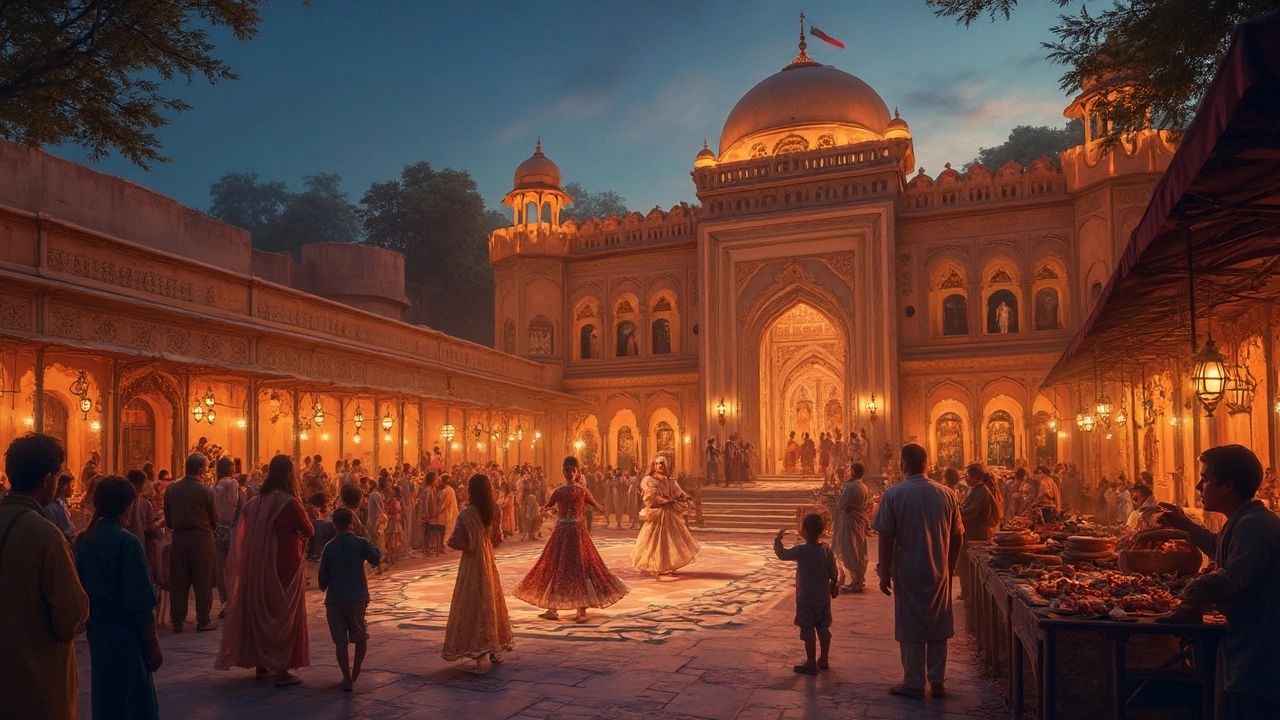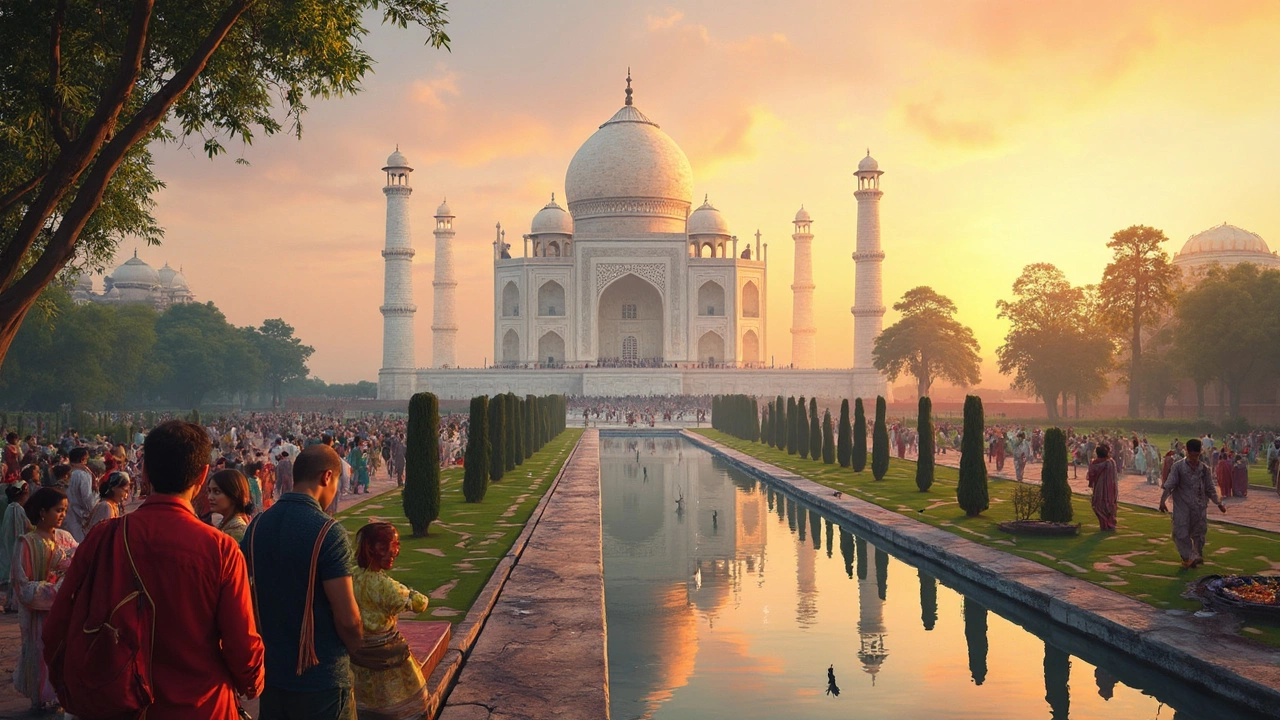Walk into Agra and you’ll get it—the most famous man-made tourism product in India isn’t tucked away in a museum. It towers above the Yamuna River. The Taj Mahal pulls in millions each year, putting India’s heritage literally on the map for travelers. It’s not just about snapping that flawless photo or checking a box on your bucket list. The entire experience is crafted—from the ticketing and guides to the local shops selling marble trinkets. Each part is designed to turn a single monument into a full-blown adventure.
Thinking of planning your trip? Knowing the ins and outs of these human-built wonders helps you get more from every visit. So before you book your tickets or join that sunrise tour, stick around. You’ll learn how these iconic spots shape journeys, set cultures in motion, and help travelers like you make lasting memories—often for less money and hassle than you’d guess.
- What Are Man-Made Tourism Products?
- Classic Example: The Taj Mahal’s Magnetic Pull
- How These Sites Transform Visitor Experience
- Tips for Visiting and Savoring Cultural Icons
What Are Man-Made Tourism Products?
If you’re wondering what counts as a man-made tourism product, think of anything built or created by people specifically to attract visitors. These aren’t natural waterfalls or untouched forests—we’re talking about sites built on purpose or preserved to share stories, culture, or history. Some top examples in India include the Taj Mahal, Jaipur’s Amber Fort, and Delhi’s India Gate. They don’t just mark historic events; they’re designed to draw crowds, teach lessons, and fuel local business.
Unlike natural wonders, these places involve planning, big investments, and ongoing maintenance. They need guides, visitor centers, ticket counters, security, and regular promotion. A man-made tourism product usually comes with:
- A built structure or site (like temples, forts, museums)
- On-site experiences—think guided tours, events, or exhibitions
- Facilities for visitors, such as restrooms, cafes, or souvenir shops
- Efforts to protect or restore old buildings, often backed by government or private groups
These products give travelers a way to connect with the culture, architecture, or history of a place. They also play a huge role in supporting local jobs, from tour guides to craft shops. In India, with its deep history and love for storytelling, creating and maintaining these spots isn’t just business—it’s a way to keep traditions alive for future generations.
Classic Example: The Taj Mahal’s Magnetic Pull
Ask most travelers why they’re heading to India, and the Taj Mahal usually tops the list. Built in the mid-1600s by Mughal emperor Shah Jahan as a tribute to his wife Mumtaz Mahal, this place does more than just look impressive on postcards. It's designed for massive tourism—it handled almost seven million visitors in 2019, according to the Archaeological Survey of India.
What goes into making the man-made tourism product a global sensation? The Taj Mahal isn’t just about the marble dome with its mind-blowing symmetry. The entire site is a package: spacious gardens, reflective pools, red sandstone gates, and even carefully managed entry times to give everyone a chance to really take it in. Guided tours in multiple languages and a special night viewing window during full moons just add to the appeal.
To give you a sense of the scale, here’s what Taj Mahal tourism looked like just before the pandemic:
| Year | Total Visitors (Millions) | Foreign Visitors (%) |
|---|---|---|
| 2017 | 6.5 | 14% |
| 2018 | 6.9 | 15% |
| 2019 | 6.9 | 16% |
That’s not just luck. The amount of planning and investment is huge. The Taj brings in serious money for Agra’s hotels, rickshaw drivers, restaurants, and souvenir shops. Local government has even tried crowd control with daily ticket limits and different pricing for locals and foreigners, keeping things organized without ruining the vibe.
- Online ticket booking lets you skip crazy-long lines.
- You can use electric buses and rickshaws (cars aren’t allowed too close due to pollution).
- There’s a strict list of items you can bring inside; bring only essentials to avoid hassle.
- Cameras are allowed but tripods are banned.
If you’re after a quieter experience, locals swear by sunrise—not just for the lighter crowds but also because that famous white marble glows pink. Night visits during full moon are rare but unforgettable, so grab those tickets early.

How These Sites Transform Visitor Experience
Man-made tourism products in India go way beyond just sightseeing. Take the Taj Mahal, for example. Standing in front of it doesn’t just connect you with history—it gives you that real sense of awe and scale you can’t get from a photo or book. The difference is all in how the place is set up for visitors.
For starters, these destinations add comfort and help to every step of your visit. Most popular sites, like the Taj Mahal or Jaipur’s Amber Fort, offer well-organized entry points, audio guides, and helpful signs in different languages. Guided tours break down the stories behind the monuments—why the Taj has four minarets, or how artisans carved those insane floral patterns. Even the ticket system tries to save you time with online booking and designated lines for international visitors.
Here’s a quick breakdown of what these sites typically offer visitors compared to unmanaged locations:
| Feature | Managed Heritage Site (e.g. Taj Mahal) | Unmanaged Site |
|---|---|---|
| Guided Tours | Available in several languages | Rare or not available |
| Facilities (restrooms, cafes) | Modern, clean, maintained | Often missing or poorly kept |
| Ticketing System | Online, fast-track options | Usually ticket booth only |
| Safety/Security | High, with clear checks | Unpredictable |
| Accessibility | Wheelchair access, ramps | Often not available |
There’s business behind those souvenirs, too. Local vendors, food stalls, and craft sellers thrive because of the organized tourist flow. At famous sites, you’ll see certified guides and honest pricing—making it less likely you’ll get hustled by fakes or scams.
Events and festivals at these locations also help you dive right in. The Taj Mahal at sunrise is completely different than at sunset, and special nighttime viewings get sold out fast. These setups let travelers experience culture in memorable ways, whether you’re watching a classical music show at Khajuraho Temples or buying hand-painted marble plates just outside the main gate of the Taj.
Last but not least, these sites often run campaigns for sustainability. For example, visitor caps at the Taj Mahal help control crowds, reduce wear, and keep your experience tolerable, not chaotic.
- Look for sites with official online ticketing pages—they often have insider tips or combine tickets for better value.
- Grab an audio guide or join a tour if you want the real stories, not just a selfie backdrop.
- Plan for early mornings or late afternoons to beat the heat and crowds.
Every detail, from the entry line to the guy selling chilled mango juice outside, is shaped to give travelers a smoother, richer visit. That’s how these man-made spots stand out and spark memories that last long after the trip is done.
Tips for Visiting and Savoring Cultural Icons
If you want to make the most out of your trip to Indian cultural hotspots like the Taj Mahal or Amber Fort, it helps to go in with a game plan. You're not the only one with this idea—last year alone, the Taj Mahal saw over 7 million visitors. That means crowds, lines, and the risk of missing out on what makes these places special if you rush through.
- Buy tickets online to avoid those long lines. For the Taj Mahal, official online booking not only saves time but usually gives you early entry options.
- Early mornings work best—fewer people, softer light, and cooler weather. Weekdays are generally less busy than weekends.
- Hire a local guide, especially at major spots. Many guides are government certified and can share stories and facts you'd never catch on a signboard.
- Skip the selfie sticks and take a moment to look around, soak in the atmosphere, and notice details. Many travelers say those pauses make the memories stick.
- Dress for the setting. Conservative clothing is a smart move, especially in religious places or old forts. Carry a light scarf just in case.
- Pack water and light snacks—cafés and stalls inside the main sites are rare, and India’s heat can sneak up on you fast.
Here’s a quick look at visitor numbers for a few iconic Indian man-made tourism product locations, so you know what to expect:
| Site | City | Annual Visitors (approx.) |
|---|---|---|
| Taj Mahal | Agra | 7 million |
| Qutub Minar | Delhi | 3.9 million |
| Red Fort | Delhi | 3 million |
| Amber Fort | Jaipur | 2.8 million |
One extra tip—if you want those classic, crowd-free photos, scout for side angles or go opposite the main flow. Sometimes the best view isn’t straight ahead, and you’ll end up with a unique shot and more space to breathe.
